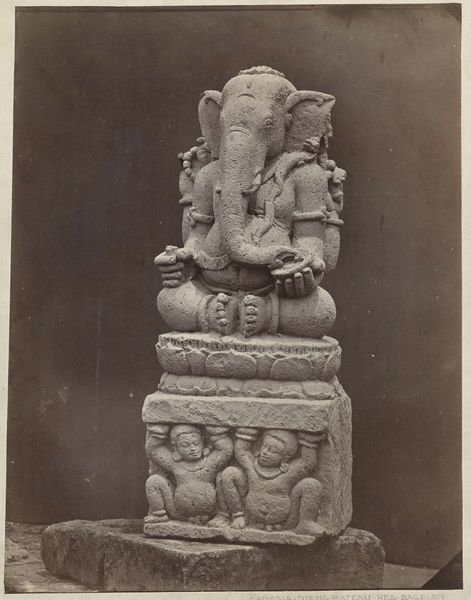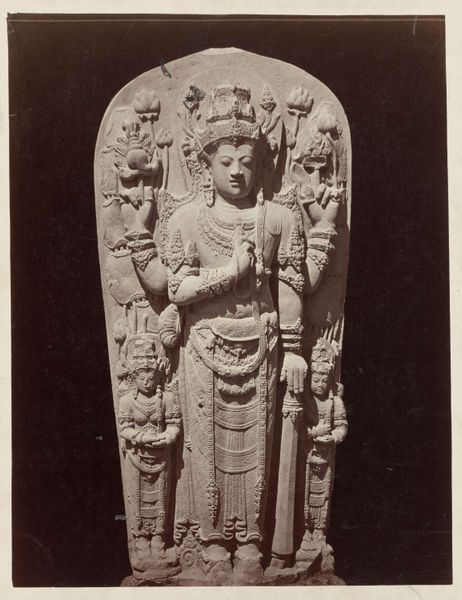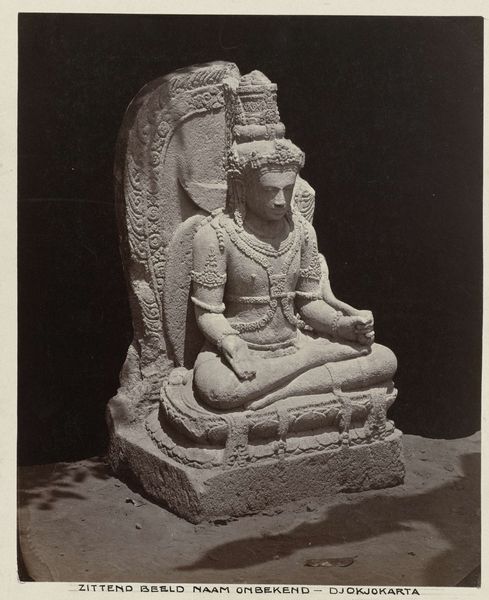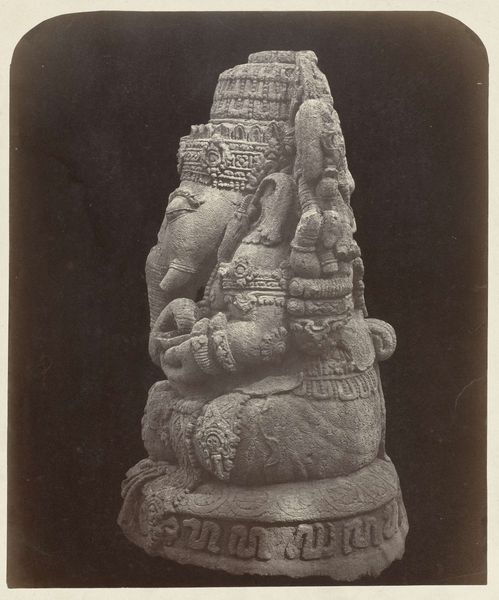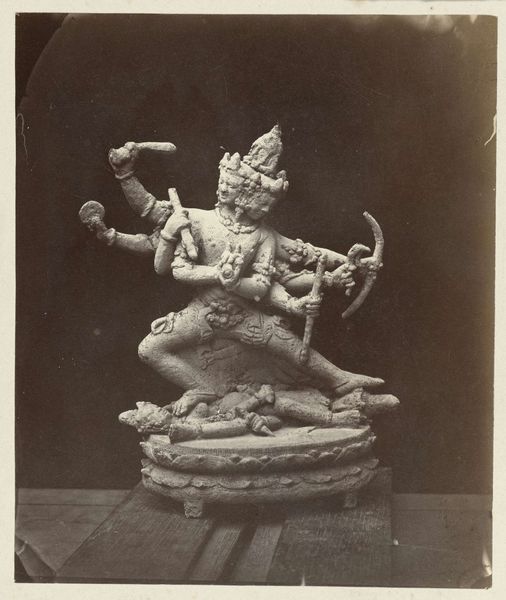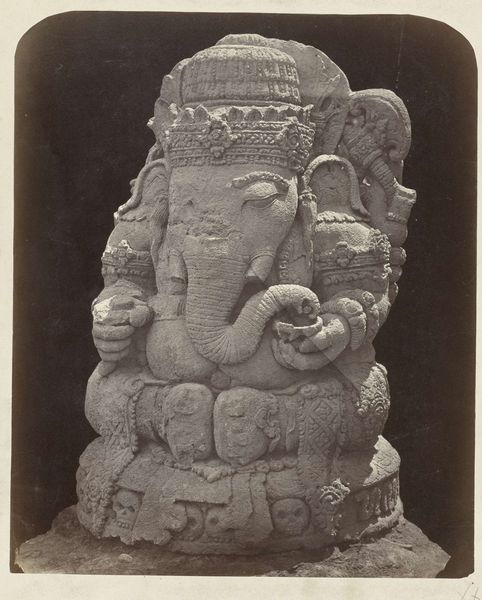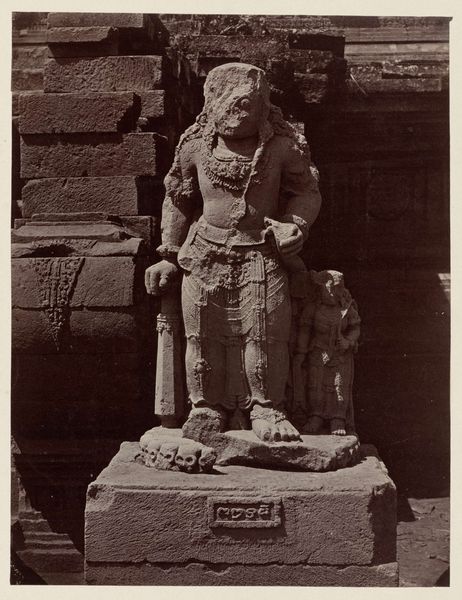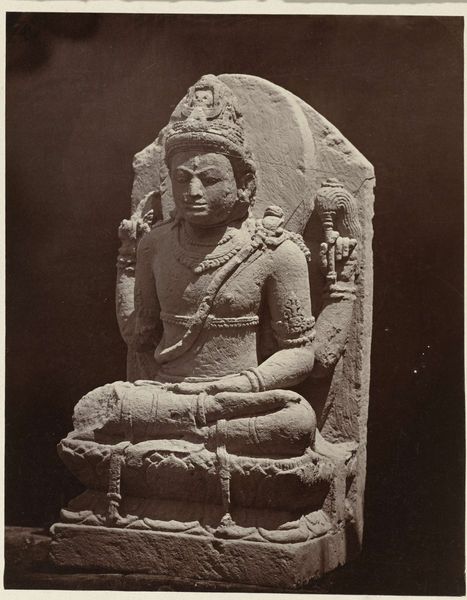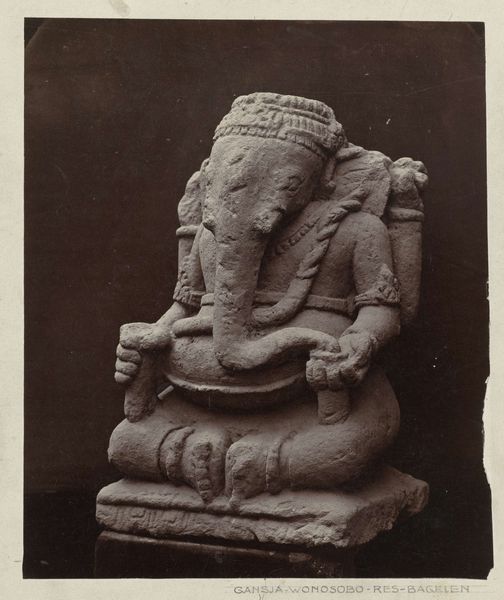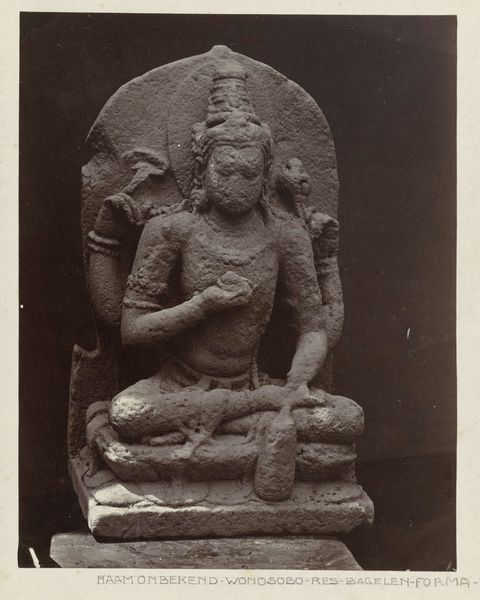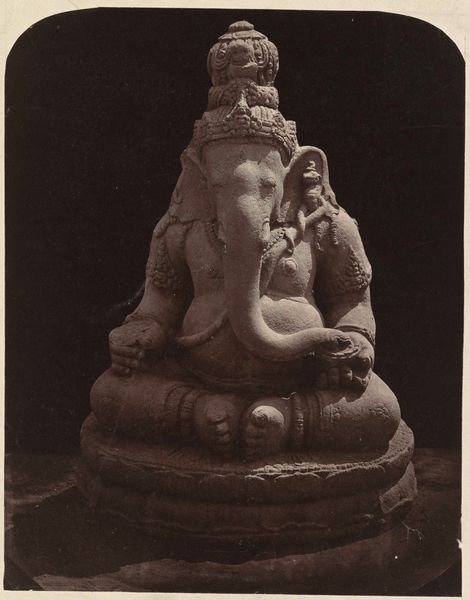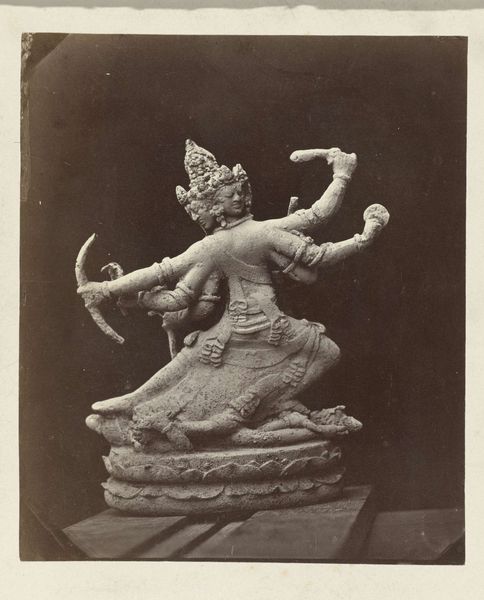
Ten armed Durga slaying the demon Mahisha, upper right arm missing. Dieng Plateau, Wonosobo district, Central Java province, 9th century. Possibly 1864 - 1867
0:00
0:00
sculpture
#
sculpture
#
asian-art
#
indigenism
#
figuration
#
ancient-mediterranean
#
sculpture
#
statue
Dimensions: height 260 mm, width 210 mm
Copyright: Rijks Museum: Open Domain
Curator: Standing before us is a photographic print capturing a sculpture known as "Ten armed Durga slaying the demon Mahisha, upper right arm missing," originating from the Dieng Plateau in Central Java, likely dating back to the mid-19th century. Editor: There's a primal rawness to it, even in this photographic rendering. You can feel the weight of the stone and the evident hand of the artisan, even with what appears to be some degradation of the carved figure and base over time. Curator: The photograph does present a compelling tonal range, emphasizing the contrasts in texture and depth. The statue’s form embodies power through geometric patterning, with the multi-armed deity dominating the composition and Mahisha cowering below, adding a distinct sense of depth. The composition invites the eye to dance between detailed adornments and sweeping lines. Editor: Precisely! It speaks to the collaborative process inherent in sculptural traditions – the sourcing and handling of stone, the techniques honed and passed down through generations of laborers and carvers, their tools…even the incidental damage suffered, as suggested in the title, offers a tangible connection to its physical and historical life, and one questions how this was recorded by Kinsbergen with a photographic process so foreign to this place. Curator: The multiple arms are crucial semantically, too, each originally bearing specific attributes. Their arrangement indicates a formalized structure – a deliberate symbolic articulation that defines her role. I am most intrigued by the original placement of this artifact; what kind of architectural space held it? Editor: Perhaps a temple or an open-air shrine. Either would signify a ritualistic significance. But to focus purely on semiotics without considering labor conditions, extraction of materials, and consumption by a spiritual market leaves something out. These details create this powerful work, too. Curator: Granted. Context undeniably enriches our understanding, especially the physical environment from which the work stems. Yet the formal execution —the compositional balance and implied dynamism of the piece— holds enduring aesthetic merit. Editor: Ultimately, examining both informs a richer dialogue with the artwork. Reflecting on its intrinsic features *and* socio-economic history allows for a full exploration of this striking sculpture of Durga.
Comments
No comments
Be the first to comment and join the conversation on the ultimate creative platform.

